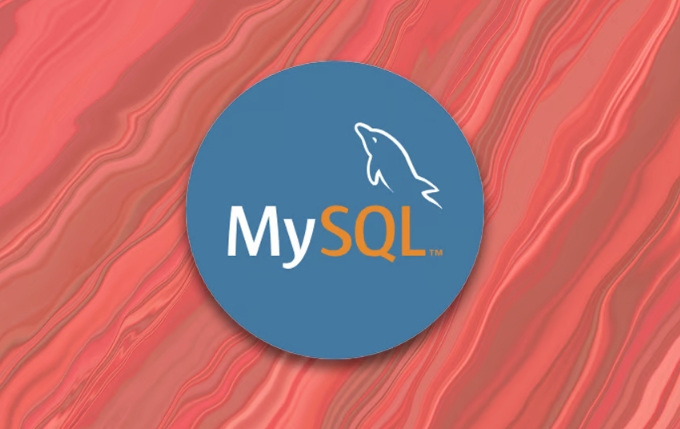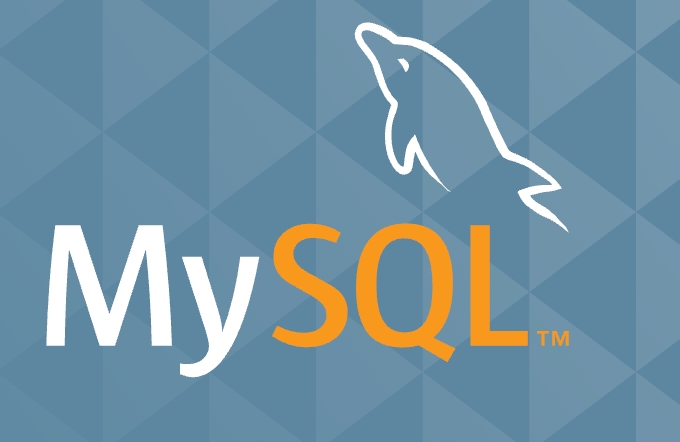Access denied for user 'root'@'localhost' is usually caused by password errors, insufficient permissions, user binding problems or configuration files. The specific solutions are as follows: 1. Confirm whether the password is correct or try to log in with empty password and set a new password; 2. If the permissions are insufficient, you can enter safe mode to reset the password and update the permissions; 3. Check whether the corresponding host of the user matches the connection method, and manually create and authorize the user if necessary; 4. Check the configuration file and authentication plug-in to ensure that skip-name-resolve is not enabled or the correct authentication plug-in is used.

Access denied for user 'root'@'localhost' is a common problem in MySQL, which usually occurs when you try to log in to the database incorrect permissions or configuration. This prompt does not necessarily mean that the account is locked, but rather that the current connection request has not passed the verification.

Below are some common reasons and corresponding solutions to help you quickly troubleshoot and solve problems.

1. Password is wrong or not set
The most common reason is that you entered the password incorrectly, or you have not set the root password before, but you entered the password when you tried to log in.
- Check whether the password is set : If you are using MySQL for the first time, the root user may not have a password by default. You can log in by simply pressing the car.
- Confirm whether the password is correct : If you remember to set the password, check it carefully again. Beware that case and special characters are prone to errors.
- Try login with empty password :
mysql -u root -p (And press Enter directly)
If you can enter, it means that the password is empty. You can use ALTER USER to set a new password after entering.

2. Insufficient permissions or the user does not exist
Sometimes you don't really create the root@localhost user in the database, or its permissions have been modified.
- Enter safe mode to reset permissions (for Linux):
- Stop MySQL service:
sudo systemctl stop mysql
- Start MySQL that skips permission table:
sudo mysqld_safe --skip-grant-tables &
- Log in to MySQL without password:
mysql -u root
- Update root user password:
FLUSH PRIVILEGES; ALTER USER 'root'@'localhost' IDENTIFIED BY 'Your new password';
- Restart MySQL and run normally:
sudo systemctl restart mysql
- Stop MySQL service:
This approach is suitable for situations where you do know what you are doing and have server access.
3. Host name or user binding issues
MySQL users have the "host" field restrictions, such as root@localhost and root@127.0.0.1 are two different users.
Confirm which way you connect :
- If you are using
mysql -u root -h 127.0.0.1 -p, then the matching isroot@127.0.0.1 - If you are using
mysql -u root, the default is to go to the local socket, and the matching isroot@localhost
- If you are using
Check whether the user has a corresponding host : After logging in to MySQL, execute:
SELECT User, Host FROM mysql.user;
See if there is any
root@localhostor the host you want to use.If it does not exist, you can add it manually :
CREATE USER 'root'@'127.0.0.1' IDENTIFIED BY 'Password'; GRANT ALL PRIVILEGES ON *.* TO 'root'@'127.0.0.1' WITH GRANT OPTION; FLUSH PRIVILEGES;
4. Configuration files or plug-ins affect login
Sometimes, some security restrictions are enabled in MySQL configuration files (such as my.cnf), or the authentication plug-in changes, which may also cause login to fail.
Check whether skip-name-resolve is enabled : If enabled, it will cause DNS reverse resolution to be invalid, which may cause permission problems.
Check whether the authentication plugin is normal : Execute:
SELECT User, Host, plugin FROM mysql.user;
If you see that the plugin of
root@localhostisauth_socketorunix_socket, you can only log in through the system user and cannot use the password.Solution:
ALTER USER 'root'@'localhost' IDENTIFIED WITH caching_sha2_password BY 'your password'; FLUSH PRIVILEGES;
Basically, these common reasons and methods are there. Don’t panic when encountering this problem. Step by step, check the username, password, host, permissions and configuration, which can generally be solved.
The above is the detailed content of mysql access denied for user root@localhost. For more information, please follow other related articles on the PHP Chinese website!

Hot AI Tools

Undress AI Tool
Undress images for free

Undresser.AI Undress
AI-powered app for creating realistic nude photos

AI Clothes Remover
Online AI tool for removing clothes from photos.

Clothoff.io
AI clothes remover

Video Face Swap
Swap faces in any video effortlessly with our completely free AI face swap tool!

Hot Article

Hot Tools

Notepad++7.3.1
Easy-to-use and free code editor

SublimeText3 Chinese version
Chinese version, very easy to use

Zend Studio 13.0.1
Powerful PHP integrated development environment

Dreamweaver CS6
Visual web development tools

SublimeText3 Mac version
God-level code editing software (SublimeText3)

Hot Topics
 What is GTID (Global Transaction Identifier) and what are its advantages?
Jun 19, 2025 am 01:03 AM
What is GTID (Global Transaction Identifier) and what are its advantages?
Jun 19, 2025 am 01:03 AM
GTID (Global Transaction Identifier) ??solves the complexity of replication and failover in MySQL databases by assigning a unique identity to each transaction. 1. It simplifies replication management, automatically handles log files and locations, allowing slave servers to request transactions based on the last executed GTID. 2. Ensure consistency across servers, ensure that each transaction is applied only once on each server, and avoid data inconsistency. 3. Improve troubleshooting efficiency. GTID includes server UUID and serial number, which is convenient for tracking transaction flow and accurately locate problems. These three core advantages make MySQL replication more robust and easy to manage, significantly improving system reliability and data integrity.
 What is a typical process for MySQL master failover?
Jun 19, 2025 am 01:06 AM
What is a typical process for MySQL master failover?
Jun 19, 2025 am 01:06 AM
MySQL main library failover mainly includes four steps. 1. Fault detection: Regularly check the main library process, connection status and simple query to determine whether it is downtime, set up a retry mechanism to avoid misjudgment, and can use tools such as MHA, Orchestrator or Keepalived to assist in detection; 2. Select the new main library: select the most suitable slave library to replace it according to the data synchronization progress (Seconds_Behind_Master), binlog data integrity, network delay and load conditions, and perform data compensation or manual intervention if necessary; 3. Switch topology: Point other slave libraries to the new master library, execute RESETMASTER or enable GTID, update the VIP, DNS or proxy configuration to
 How to connect to a MySQL database using the command line?
Jun 19, 2025 am 01:05 AM
How to connect to a MySQL database using the command line?
Jun 19, 2025 am 01:05 AM
The steps to connect to the MySQL database are as follows: 1. Use the basic command format mysql-u username-p-h host address to connect, enter the username and password to log in; 2. If you need to directly enter the specified database, you can add the database name after the command, such as mysql-uroot-pmyproject; 3. If the port is not the default 3306, you need to add the -P parameter to specify the port number, such as mysql-uroot-p-h192.168.1.100-P3307; In addition, if you encounter a password error, you can re-enter it. If the connection fails, check the network, firewall or permission settings. If the client is missing, you can install mysql-client on Linux through the package manager. Master these commands
 Why is InnoDB the recommended storage engine now?
Jun 17, 2025 am 09:18 AM
Why is InnoDB the recommended storage engine now?
Jun 17, 2025 am 09:18 AM
InnoDB is MySQL's default storage engine because it outperforms other engines such as MyISAM in terms of reliability, concurrency performance and crash recovery. 1. It supports transaction processing, follows ACID principles, ensures data integrity, and is suitable for key data scenarios such as financial records or user accounts; 2. It adopts row-level locks instead of table-level locks to improve performance and throughput in high concurrent write environments; 3. It has a crash recovery mechanism and automatic repair function, and supports foreign key constraints to ensure data consistency and reference integrity, and prevent isolated records and data inconsistencies.
 Why do indexes improve MySQL query speed?
Jun 19, 2025 am 01:05 AM
Why do indexes improve MySQL query speed?
Jun 19, 2025 am 01:05 AM
IndexesinMySQLimprovequeryspeedbyenablingfasterdataretrieval.1.Theyreducedatascanned,allowingMySQLtoquicklylocaterelevantrowsinWHEREorORDERBYclauses,especiallyimportantforlargeorfrequentlyqueriedtables.2.Theyspeedupjoinsandsorting,makingJOINoperation
 What are the transaction isolation levels in MySQL, and which is the default?
Jun 23, 2025 pm 03:05 PM
What are the transaction isolation levels in MySQL, and which is the default?
Jun 23, 2025 pm 03:05 PM
MySQL's default transaction isolation level is RepeatableRead, which prevents dirty reads and non-repeatable reads through MVCC and gap locks, and avoids phantom reading in most cases; other major levels include read uncommitted (ReadUncommitted), allowing dirty reads but the fastest performance, 1. Read Committed (ReadCommitted) ensures that the submitted data is read but may encounter non-repeatable reads and phantom readings, 2. RepeatableRead default level ensures that multiple reads within the transaction are consistent, 3. Serialization (Serializable) the highest level, prevents other transactions from modifying data through locks, ensuring data integrity but sacrificing performance;
 What are the ACID properties of a MySQL transaction?
Jun 20, 2025 am 01:06 AM
What are the ACID properties of a MySQL transaction?
Jun 20, 2025 am 01:06 AM
MySQL transactions follow ACID characteristics to ensure the reliability and consistency of database transactions. First, atomicity ensures that transactions are executed as an indivisible whole, either all succeed or all fail to roll back. For example, withdrawals and deposits must be completed or not occur at the same time in the transfer operation; second, consistency ensures that transactions transition the database from one valid state to another, and maintains the correct data logic through mechanisms such as constraints and triggers; third, isolation controls the visibility of multiple transactions when concurrent execution, prevents dirty reading, non-repeatable reading and fantasy reading. MySQL supports ReadUncommitted and ReadCommi.
 How to add the MySQL bin directory to the system PATH
Jul 01, 2025 am 01:39 AM
How to add the MySQL bin directory to the system PATH
Jul 01, 2025 am 01:39 AM
To add MySQL's bin directory to the system PATH, it needs to be configured according to the different operating systems. 1. Windows system: Find the bin folder in the MySQL installation directory (the default path is usually C:\ProgramFiles\MySQL\MySQLServerX.X\bin), right-click "This Computer" → "Properties" → "Advanced System Settings" → "Environment Variables", select Path in "System Variables" and edit it, add the MySQLbin path, save it and restart the command prompt and enter mysql--version verification; 2.macOS and Linux systems: Bash users edit ~/.bashrc or ~/.bash_






